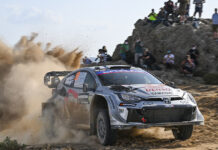HYDERABAD – The clock was ticking.
Weaving at high speeds through the traffic of Hyderabad, a city in southern India, Mr Shivam Tirupati Niralwar, 29, ran through red lights and drove into oncoming traffic. He would do whatever it took to fulfill his mission: deliver an order of fried okra to a 25-year-old office worker in no more than 11 minutes.
Mr Niralwar is part of an army of drivers working for Indian delivery apps that are competing fiercely – some say dangerously – to see just how fast a restaurant meal, an evening’s cooking supplies or an iPhone can be conveyed to a waiting customer.
Quick commerce has become the norm in many countries. But some Indian companies are pushing the bounds of logistics and endurance.
The service that Mr Niralwar works for, Swiggy Instamart, promises grocery deliveries “in minutes”. A competitor, Zepto, puts a number on its alacrity: 10 minutes or less. Others offer same-day delivery of heavy appliances, or package pickup in an hour or two.
Companies like these, which have proliferated during the Covid-19 pandemic, are offering deliveries at ever lower prices and with ever-shorter wait times in hopes of achieving scale in a crowded market. They are under intense pressure to find the right formula as domestic and foreign investors pour in billions of dollars, hoping to pick winners that will one day turn a profit.
As these new ventures test whether the market demands 10-minute deliveries of loaves of bread or packets of masala, the burden falls disproportionately on the drivers – a seemingly endless supply of young people, mostly men, willing to work long hours under hair-thin deadlines for a few dollars a day.
“Somebody has to pay for that,” said Dr Saibal Kar, a professor of economics at the Centre for Studies in Social Sciences in Kolkata. “Unfortunately, it’s the workers.”
India’s economy is growing at the fastest pace of any major country, fuelled by corporate earnings and middle-class consumption of the sorts of goods these companies are rushing to deliver.
But there has been no commensurate growth in steady jobs in India’s deeply unequal society. That has left the legions of working poor who toil as delivery drivers to serve a middle class that they have fewer and fewer hopes of ever entering.
Millions have been pushed into gig work as Prime Minister Narendra Modi has moved to privatise public entities and cut red tape, enacting a series of changes to labour regulations that have diluted protections for workers.
The number of gig workers is projected to reach 23.5 million in 2030, nearly triple the number in 2020, according to a June report by Niti Aayog, a government research agency.
With India’s public sector shrinking, the informal sector now accounts for more than nine out of 10 jobs, International Labour Organisation data show. Such jobs, without guaranteed health insurance, social security or pensions, range from the treacherous – construction work without hard hats or other protective gear, or assembly line labour in illegal firetrap factories – to the merely miserable.
Work as a delivery driver can seem a better alternative. Delivery app companies dangle offers of 45,000 rupees (S$727) per month in targeted ads on social media, about double the country’s median income.
































